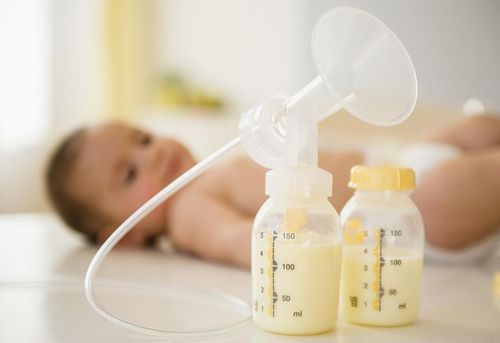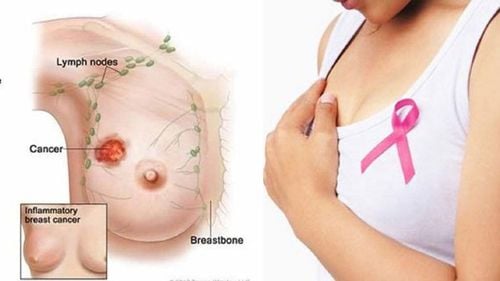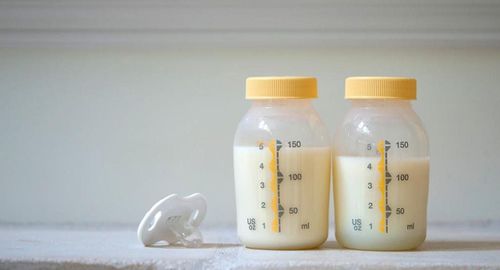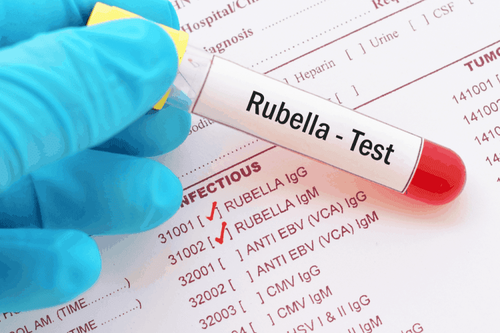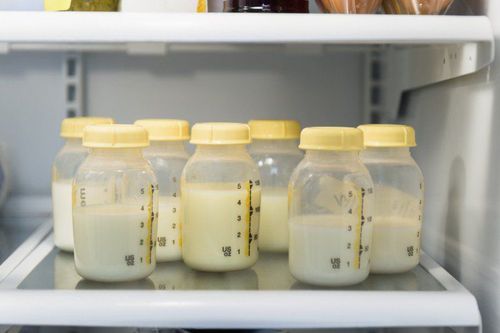This is an automatically translated article.
The article was professionally consulted by Doctor Hoang Thi Anh Tuyet - Department of Obstetrics and Gynecology, Vinmec Central Park International General Hospital.Frozen breast milk is the solution to feed babies for mothers who produce a lot of milk or have to leave their babies to go back to work. Defrosting breast milk is a simple job, but if you do not master the rules, parents can accidentally make milk lose nutrients.
1. Ideal breast milk defrosting temperature
There are two main reasons why women have to express or pump breast milk out and freeze it, including: The milk is secreted too much, the baby can't finish enough so the mother has to extract it, or the mother has to go back to work. Keep milk ready for your baby to nurse at home regularly.Before taking out the frozen breast milk to feed the baby, it is imperative to undergo the defrosting process. Although this operation is simple, it requires mothers to have certain knowledge, specifically about how to defrost, how long and how long breast milk can be stored after warming.
The ideal milk warming temperature is at 37 degrees Celsius, because this warmth is equivalent to the mother's body temperature, giving the baby a feeling of familiarity. Milk can be heated with steam for 6-10 minutes so that the maximum nutritional content is preserved.
If the mother does not properly control the temperature and time, it can cause the ratio of nutrients in the milk to change, antibodies such as Lactoferrin and Lysozyme lose their anti-inflammatory and anti-inflammatory effects for the baby because of the broken structure. original molecular structure. Let's find out the advantages and disadvantages of each method, as well as what should and shouldn't be applied when defrosting breast milk.
2. Common ways to defrost breast milk
2.1. Defrost slowly at room temperatureMany women have the notion that if breast milk is warmed, all nutrients will be lost with temperature. Therefore, they choose to defrost breast milk at normal temperature to ensure that the milk is not affected by heat.
In fact, not every method of reheating frozen breast milk will lose nutrients. Vitamins and antibodies present in breast milk are lost only when exposed to extreme heat or by vigorous shaking. Moreover, experts all insist that milk should not be thawed at room temperature. Because doing so both prolongs the thawing time of breast milk, and also causes bacteria to multiply and increase in the milk.
2.2. Manual heating The right and wrong methods of manual heating breast milk include:
Soaking in boiling water Breast milk should only be thawed below 40 degrees Celsius to limit the loss of nutrients in the milk. Therefore, the mother should not soak the milk in too hot or boiling water.
Incubate warm and hot water This method can be applied if the mother keeps the milk in the refrigerator compartment. Soaking in warm water is considered to be able to preserve most of the nutrients in milk. However, mothers should not shake the milk quickly because they want to warm up quickly, leading to breaking and breaking the molecular structure in the nutrients.
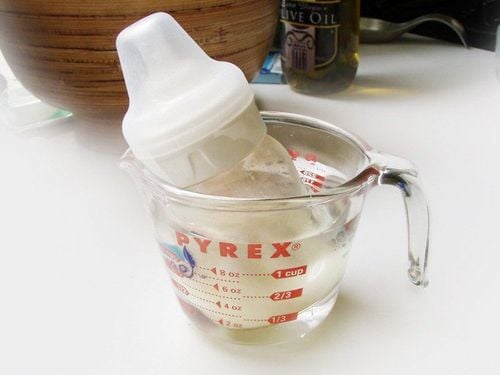
Ngâm sữa trong nước ấm nóng là cách rã đông sữa mẹ phổ biến
Steam Steam To reuse breast milk that has been stored in the freezer, steaming in a water bath can be a good idea, but the mother will have difficulty in getting the correct temperature setting.
Boil breast milk Do not use boiling breast milk to thaw because sudden temperature changes will cause breast milk to lose its natural properties of the beneficial protective protein antibody molecule.
2.3. Using a microwave The advantage of the microwave defrosting method is that it is convenient and quick. However, this method often makes hot milk old, the baby still has to wait until the milk cools down to the ideal temperature before feeding. Moreover, defrosting breast milk with a microwave oven also has many disadvantages, such as:
The bag/bottle of frozen breast milk has an uneven temperature - cold can cause burns to the baby when feeding. The temperature is too high. cause the nutritional amino acids in breast milk to lose its protective role. Electromagnetic waves have the risk of destroying essential vitamins, causing a loss of the essential nutrients inherent in breast milk For the above reasons, using a microwave oven Waves to thaw breast milk are not recommended by nutritionists.
2.4. Milk warmer/warmer The bottle warmer is appreciated for its ability to preserve nutrients best of all methods. Thanks to smart technology, this way ensures 3 criteria in defrosting breast milk: temperature, time and nutrition.
Specifically, the device will replace the mother to control the safe temperature level in the right time precisely. The ability to store vitamins, lactose and protein of the machine is almost intact, higher efficiency than a microwave oven. Using a frozen breast milk warmer/incubator helps mothers to worry less about the loss of milk quality.
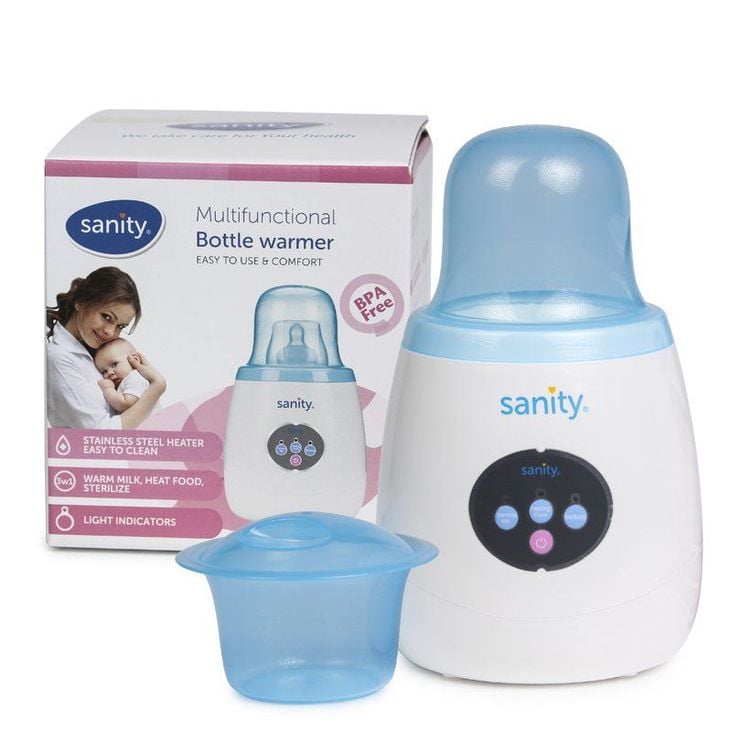
Dùng thiết bị hâm sữa tự động được cho là biện pháp rã đông sữa mẹ tối ưu
3. Some mistakes when using frozen breast milk
Around the question of how long breast milk can be kept after warming, many women think that just heating it to defrost completely and then letting it cool down to 37 degrees Celsius is enough. However, experts assert that this is a misconception. In addition, mothers should also be careful not to make the following mistakes:Storing excess curds again Divide 1 portion of frozen milk more than your baby's feed Shake vigorously the newly defrosted bottle Does not recognize signs of spoiled milk Mix leftover curd mixed with freshly expressed milk Rapid defrost with high temperature In short, the ideal breast milk defrosting temperature is around 37 degrees Celsius. If possible, mothers should use a device automatically warmed milk to ensure accuracy and nutrition in milk. Milk should only be frozen once, after thawing, it must be used immediately, cannot be stored again. The bottle can be shaken well and gently before feeding, but avoid too strong impact as well as too high temperature. If the frozen breast milk after thawing is milky and curdled, there is a risk that the milk has been spoiled, the mother should not give this milk to the baby because it is no longer of good quality.
For more nutritional knowledge and child care for each age, parents should regularly visit the website vimec.com and make an appointment with the leading doctors, pediatric and nutrition experts of the National General Hospital. Vinmec when needing advice on children's health.




